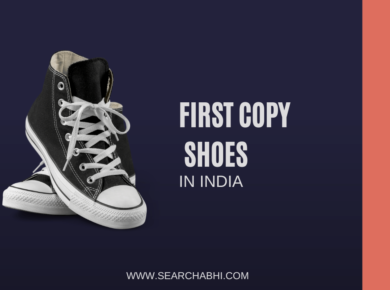The “Apple Copy Watch” phenomenon encompasses a range of imitations that seek to emulate Apple’s popular wearables. In the realm of technology, Apple is a dominant force, leading the way with groundbreaking innovations that shape the industry. The iPhone and MacBook are just a few examples of Apple’s products that have revolutionized modern living. However, success often breeds imitation, especially in the realm of smartwatches. This article explores the allure, consequences, and broader impact of Apple copy watches on innovation and intellectual property.
The Rise of Apple Copy Watches
The Apple Watch, from the moment of its creation, has stood as an emblem of technological advancement and improved lifestyle. Its flawless connection to the Apple ecosystem, along with a wide range of health and fitness capabilities, has transformed it into a sought-after accessory for countless individuals globally. Unsurprisingly, this triumph has led to a surge of copycats looking to benefit from Apple’s innovative design and features.
The phrase “Apple Copy Watch” is used to describe smartwatches that imitate the design, interface, and branding of the Apple Watch. These devices frequently exhibit remarkable similarities to the original product from Cupertino, ranging from the distinct rectangular shape to the iconic digital crown. Certain models even attempt to replicate Apple’s exclusive watchOS interface, although their level of success may vary.
Comprehending the Attraction
There are various reasons behind the popularity of Apple copy watches:
1. Price Point:
The Apple Watch is considered a luxury item, making it unattainable for many potential buyers. On the other hand, Apple copy watches provide a more cost-effective option, enabling users to experience the style and features of a smartwatch without a hefty price tag.
2. Design Appeal:
Apple’s design aesthetics are highly regarded for their sleek and minimalist look. By replicating the design of the Apple Watch, imitation devices capitalize on the appeal and recognition of Apple’s signature style. For individuals who appreciate Apple’s design principles but cannot afford the original product, a copy watch becomes an attractive alternative.
3. Feature Equivalency:
Over time, copycat smartwatches have closed the gap in terms of functionality compared to genuine Apple Watches. Many imitation models now offer features like heart rate monitoring, activity tracking, and seamless connectivity with smartphones – meeting the demands of modern tech-savvy consumers.

Innovation Implications
The proliferation of counterfeit Apple watches may provide certain advantages to consumers, but it also raises significant concerns regarding the promotion of innovation and safeguarding intellectual property. Apple dedicates substantial resources to research and development in order to introduce revolutionary products to the market. Conversely, imitative manufacturers often rely on replication rather than originality to compete.
Inhibiting Innovation:
The prevalence of counterfeit products can discourage genuine innovation within the industry. If companies feel that their designs and ideas are not adequately protected, they may be less inclined to invest in research and development. Consequently, this could impede progress and restrict the emergence of truly groundbreaking technologies.
Legal Obstacles:
Apple has not hesitated to take legal action against companies manufacturing counterfeit devices. High-profile cases, such as the legal dispute with Samsung over smartphone design patents, highlight the significance of intellectual property protection in the technology sector. However, enforcing these rights can be challenging, particularly in jurisdictions where intellectual property laws are less stringent.
Awareness among consumers
In a market saturated with counterfeit goods, it is imperative for consumers to be well-informed. While certain people might opt for knockoff items knowingly to save money, others could fall victim to misleading advertising or packaging. Therefore, it is vital for consumers to familiarize themselves with the disparities between authentic and counterfeit products, taking into consideration aspects like construction quality, software updates, and warranty services.
The Future of Wearable Tech
With the continuous evolution of technology, the wearable devices industry is expected to experience significant changes. Apple, known for its dedication to innovation and user satisfaction, is poised to lead this transformation. Nevertheless, the existence of imitative products highlights the difficulties of safeguarding intellectual property rights in today’s interconnected world.
In conclusion
The presence of Apple replica watches brings attention to the intricate relationship between innovation, imitation, and consumer preference within the technology sector. Although imitation may provide immediate advantages in terms of cost-effectiveness and availability, it also presents enduring threats to authentic innovation and intellectual property rights. As consumers, it is crucial to contemplate the wider consequences of our buying choices and promote a culture of innovation that acknowledges and rewards genuine inventiveness and resourcefulness. Only through this approach can we guarantee that the forthcoming era of wearable technology genuinely pushes the limits of what can be achieved.
Apple Watch latest Price
Today's Best deals
Auto Amazon Links: No products found.







